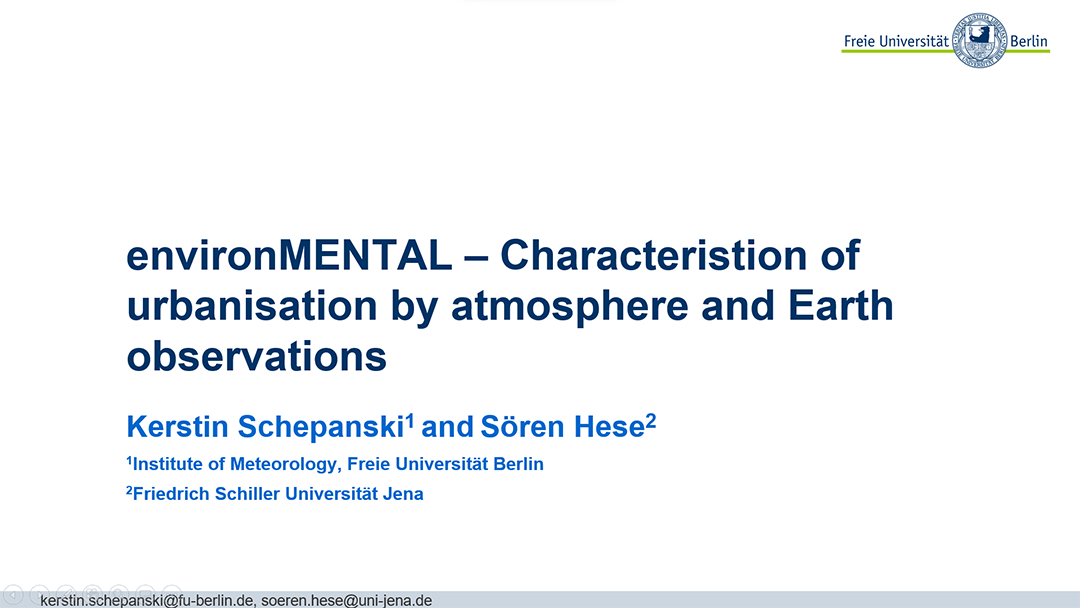Kerstin Schepanski, Sören Hese
Free University Berlin, Institute for Meteorology, Radiation and Remote Sensing. 2Friedrich Schiller University Jena, Institute for Geography, Remote Sensing
Free University Berlin, Institute for Meteorology, Radiation and Remote Sensing. 2Friedrich Schiller University Jena, Institute for Geography, Remote Sensing
Climate, weather and air pollution in concert determine the atmospheric environment and ultimately the air we breathe. Reoccurring daily weather conditions like sunshine cloudiness, wind, temperature and humidity, but also prolonged weather patterns fostering the development of life-threatening conditions like heat waves or flooding events may cause external stress impacting on mental health. Additionally, human activity such as industrialization and urbanization have modulated the local atmospheric environment, potentially feeding back on human wellbeing. In the framework of environMENTAL, we will examine key parameters characterizing the atmospheric environment (i.e., climate, weather, air pollution) to which population cohorts are exposed to by means of satellite observations and numerical model simulations (re-analysis data). The presentation will provide an overview on key atmospheric parameters identified as supposedly relevant to mental health and an outline on data analysis strategies.
We will use remote sensing satellite data and derived data products to spatially characterize urbanisation and urbanicity. The following datasets will be combined and fused to derive intermediate and final descriptions of urbanisation: the Global Urban Footprint dataset (DLR-GUF), the harmonized global night time light dataset (NTL), MODIS NDVI and NDBI, global landcover data from MODIS Terra/Aqua and derived structural parameters to differentiate urban structure type (UST) using urban building height information from TanDEM_X global or SRTM30 data – depending on availability and height model accuracy. From surface height a terrain and a building height model is calculated using a local min approach within a building structure depending search range. The combination of NTL data and DLR-GUF/spectral indices and height data will allow further differentiation between types of urbanisation and indicators of socio-economic status or urban development status.
We will use remote sensing satellite data and derived data products to spatially characterize urbanisation and urbanicity. The following datasets will be combined and fused to derive intermediate and final descriptions of urbanisation: the Global Urban Footprint dataset (DLR-GUF), the harmonized global night time light dataset (NTL), MODIS NDVI and NDBI, global landcover data from MODIS Terra/Aqua and derived structural parameters to differentiate urban structure type (UST) using urban building height information from TanDEM_X global or SRTM30 data – depending on availability and height model accuracy. From surface height a terrain and a building height model is calculated using a local min approach within a building structure depending search range. The combination of NTL data and DLR-GUF/spectral indices and height data will allow further differentiation between types of urbanisation and indicators of socio-economic status or urban development status.


